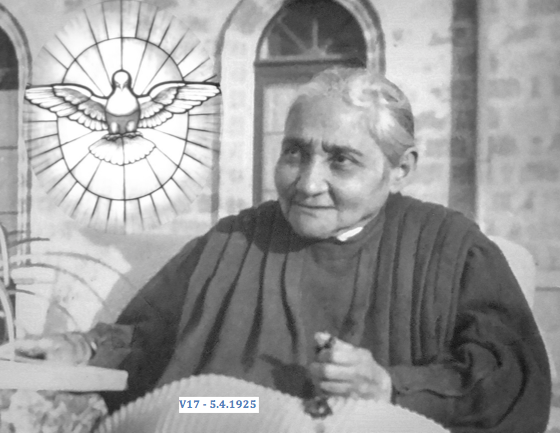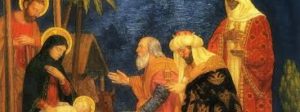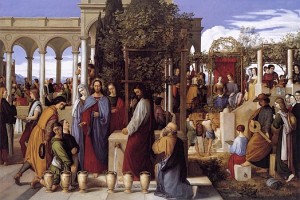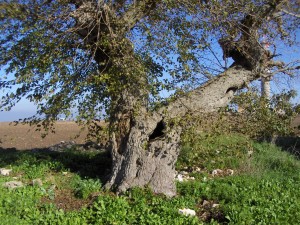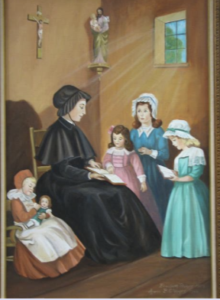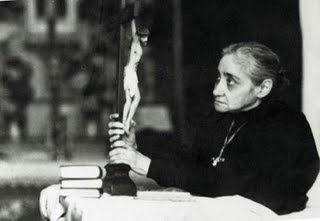Click here for the link to the Blessing of the Home on the Feast Day of the Epiphany
From the Writings of
The Servant of God Luisa Piccarreta
The Little Daughter of the Divine Will
Feast of the Epiphany of the Lord
“When Jesus was born in Bethlehem of Judea, in the days of King Herod, behold, magi from the east arrived in Jerusalem, saying, “Where is the newborn king of the Jews? We saw his star at its rising and have come to do him homage.” When King Herod heard this, he was greatly troubled, and all Jerusalem with him. Assembling all the chief priests and the scribes of the people, he inquired of them where the Christ was to be born. They said to him, “In Bethlehem of Judea, for thus it has been written through the prophet: And you, Bethlehem, land of Judah, are by no means least among the rulers of Judah; since from you shall come a ruler, who is to shepherd my people Israel.” Then Herod called the magi secretly and ascertained from them the time of the star’s appearance. He sent them to Bethlehem and said, “Go and search diligently for the child. When you have found him, bring me word, that I too may go and do him homage.” After their audience with the king they set out. And behold, the star that they had seen at its rising preceded them, until it came and stopped over the place where the child was. They were overjoyed at seeing the star, and on entering the house they saw the child with Mary his mother. They prostrated themselves and did him homage. Then they opened their treasures and offered him gifts of gold, frankincense, and myrrh. And having been warned in a dream not to return to Herod, they departed for their country by another way.” – Matthew 2:1-12
The Queen of Heaven in the Kingdom of the Divine Will: Day 23
What was not the astonishment of these Magi Kings, in recognizing in that divine infant the King of Heaven and earth.
Now, my child, another surprise: a new star shines under the vault of the heavens, and with its light it is searching for adorers, to lead them to recognize and adore baby Jesus. Three individuals, each distant from the other, are touched by it, and invested by supernatural light, follow the star, which leads them to the grotto of Bethlehem, to the feet of the baby Jesus. What was not the astonishment of these Magi Kings, in recognizing in that divine infant the King of Heaven and earth – the One Who had come to love and to save all? In fact, when the Magi were in the act of adoring Him, enraptured by that celestial beauty, the newborn baby made His Divinity shine forth from His little humanity, and the grotto turned into paradise; so much so, that they were not able to separate themselves from the feet of the divine infant – not before He again withdrew the light of the Divinity within His humanity. And I, exercising the office of mother, spoke at length of the descent of the Word, and fortified them in faith, hope and charity, symbolized by the gifts offered to Jesus. Then, full of joy, they withdrew to their regions, to be the first propagators.
The Queen of Heaven in the Kingdom of the Divine Will: Day 24
You know of the coming of the Magi Kings, who caused rumor in Jerusalem
My dearest child, today the heart of your Mama is swollen with love and with sorrow, to the extent that I cannot refrain from crying. You know of the coming of the Magi Kings, who caused rumor in Jerusalem, asking for the new King. And cruel Herod, for fear of being removed from his throne, has already given the order to kill my sweet Jesus, my dear life, together with all of the other children.
My child, what pain! The One who has come to give life to all, and to bring into the world the new era of peace, of happiness and of grace…they want to kill Him! What ingratitude! What perfidy! Ah, my child, to what extent reaches the blindness of the human will! To the extent of becoming ferocious, of tying the hands of the Creator Himself, and of becoming the owner of the One who created it. Give me your compassion, my child, and try to calm the crying of the sweet Baby. He cries because of human ingratitude, because, only a newborn, they want Him dead; so, in order to save Him, we are forced to flee. Dear Saint Joseph has already been advised by the angel to leave for a foreign land. Accompany us, dear child; do not leave us alone, and I will continue to give you my lessons on the great evils of the human will.
The Epiphany The Queen of Heaven in the Kingdom of the Divine Will:
Meditation 4
A New Star, with Its Sweet Glittering, calls the Magi to adore Jesus.
Dearest child, you are right in saying that you see me as more beautiful. You must know that when I saw my Son being circumcised and His blood pouring from the wound, I loved that blood, that wound, and I became Mother twice: Mother of my Son, and Mother of His blood – of His cruel pain. Therefore I acquired a double right of maternity – a double right of graces before the Supreme Majesty, for myself and for all mankind. This is why you see me as more beautiful.
My child, how beautiful it is to do good, to suffer in peace for love of the One who created us. This binds the Divinity to the creature, and gives her so much grace and love – to the extent of drowning her. This love and these graces cannot remain idle, but want to run and give themselves to all, to make known the one who has given so much. This is why I felt the need to make my Son known.
Now, my blessed child, the Divinity, Who can deny nothing to one who loves It, makes a new star, more beautiful and radiant, arise under the blue heavens. And with its light, it goes in search of adorers, to say to the whole world, with its mute glittering: “The One Who has come to save you is born! Come to adore Him and to know Him as your Savior!”
But…human ingratitude! Among many, only three People paid attention, and without considering the sacrifices, put themselves on the path to follow the star. And just as a star guided their persons along the path, so also my prayers, my love, my sighs and my graces, in my desire of making known the Celestial Baby – the Awaited One from all centuries – like many stars descending into their hearts, illuminated their minds and guided their interiors, in such a way that, without yet knowing Him, they felt that they loved the One for whom they were looking, and they hastened their step in order to reach and see the One whom they so much loved.
My dearest child, my heart of a Mother rejoiced for the faithfulness, the correspondence and the sacrifice of these Magi Kings, to come to know and adore my Son. But I cannot hide from you a secret sorrow of mine: among many, only three. In the history of the centuries, how many times is this sorrow of mine and this human ingratitude not repeated! My Son and I do nothing but make stars arise, one more beautiful than the other, to call some to know their Creator, some to sanctity, some to rise again from sin, some to the heroism of a sacrifice… But do you want to know what these stars are? A painful encounter is a star; a truth that one comes to know is a star; a love unrequited by other creatures is a star; a setback, a suffering, a disillusion, an unexpected fortune, are many stars which shed light in the minds of creatures. Caressing them, they want to make them find the Celestial Infant, who is fidgeting with love, shivering with cold, and seeking a refuge in their hearts to be known and loved. But, alas, I who hold Him in my arms, wait in vain for the stars to bring me the creatures, in order to place Him in their hearts – and my maternity is restrained, hindered. While I am the Mother of Jesus, I am prevented from being the mother of all, because they are not around me, and do not look for Jesus. So the stars hide, and they remain in the Jerusalems of the world, without Jesus. What sorrow, my child, what sorrow! It takes correspondence, fidelity and sacrifice to follow the stars; and if the sun of the Divine Will rises within the soul – how much attention does it not take. Otherwise, one remains in the darkness of the human will.
Now, my child, as they entered Jerusalem, the holy Magi Kings lost the star, but, still, they did not stop looking for Jesus. But as they went outside the city, the star reappeared and led them, festive, into the grotto of Bethlehem. I received them with the love of a Mother, and the dear Baby looked at them with great love and majesty, letting His Divinity shine through His little humanity. Bowing down, they knelt at His feet, and adoring and contemplating that celestial Beauty, they recognized Him as true God. They remained enraptured, ecstatic – enjoying Him; so much so, that the Celestial Baby had to withdraw His Divinity into His Humanity, otherwise they would have remained there, unable to move from His divine feet.
Then, as they came round from their rapture, in which they offered the gold of their souls, the incense of their faith and adoration, the myrrh of all of their beings and of any sacrifice He might have wanted, they added the offering of the external gifts, symbol of their interior acts: gold, incense and myrrh. But my love of Mother was not yet content; I wanted to place the sweet Baby in their arms, and – oh, with how much love did they kiss Him and press Him to their chests! They felt paradise, in advance, within them. Through this, my Son bound all the gentile nations to the knowledge of the true God, and placed the goods of Redemption, the return to faith of all peoples, in common for all. He constituted Himself King of the dominators, and ruling over all, with the weapons of His love, of His pains and of His tears, He called the Kingdom of His Will upon earth. And I, your Mama, wanted to be the first apostle. I instructed them; I told them the story of my Son, of His ardent love; I recommended that they make Him known to all, and assuming the first place of Mother and Queen of all Apostles, I blessed them, I had them blessed by the dear Baby, and happy and in tears, they left again for their regions. I did not leave them, I accompanied them with maternal affection, and to repay them, I let them feel Jesus in their hearts. How happy they were! You must know that only when I see that my Son has dominion, possession, and forms His perennial dwelling in the hearts of those who search for Him and love Him – only then do I feel a true Mother.
Now a little word to you, my child: if you want me to act as your true Mother, let me place Jesus in your heart. You will make Him happy with your love; you will feed Him with the food of His Will, because He takes no other food; You will clothe Him with the sanctity of your works. And I will come into your heart, I will raise my dear child again together with you, and I will perform for you and for Him, the office of Mother. In this way, I will feel the pure joys of my maternal fecundity. You must know that anything which does not begin with Jesus, who is inside the heart – even though they may be the most beautiful works on the outside – cannot please me, because they are empty of the life of my dear Son.
Volume 3 – January 6, 1900
Today is the Epiphany, and in the example of the Holy Magi, I was to offer something to Baby Jesus. Confidence, the staircase to ascend to the Divinity.
This morning I received Communion, and as I found myself together with Jesus, the Queen Mama was also there, and – oh, marvel! – I looked at the Mother and I could see Her Heart transmuted into Baby Jesus; I looked at the Son and I could see the Mother in the Heart of the Baby. In the meantime, I remembered that today is the Epiphany, and in the example of the Holy Magi, I was to offer something to Baby Jesus, but I saw myself as having nothing to give Him. So, in seeing my misery, the thought came to me of offering my body as myrrh, with all the sufferings of the twelve years in which I had been in bed, ready to suffer and to remain there as much longer as He pleased; as gold, the pain I feel when He deprives me of His presence, which is the most painful and sorrowful thing for me; as incense, my poor prayers, united to those of the Queen Mama, so that they might be more pleasing to Baby Jesus. So I made the offering with full confidence that the Baby would accept everything.
Jesus seemed to accept my poor offerings with great pleasure, but that which He enjoyed the most was the confidence with which I had offered them. Then He said to me: “Confidence has two arms: with one it embraces my Humanity, and it uses my Humanity as a staircase in order to ascend to my Divinity; with the other it embraces the Divinity and draws celestial graces in torrents, in such a way that the soul remains all inundated within the Divine Being. When the soul is confident, she is certain to obtain what she asks. I let my arms be bound, I let her do whatever she wants, I let her penetrate even into my Heart, and I let her take, by herself, that which she has asked from Me. If I did not do so, I would feel Myself in a state of violence.” While He was saying this, many rivulets of a liqueur (I call it ‘liqueur’, but I can’t really tell what it was) came out from the breast of the Baby and of the Mother, which inundated my soul completely. Then the Queen Mother disappeared.
After this, together with the Baby I went out into the vault of the heavens. I saw that His gracious face was sad, and I said to myself: ‘Maybe He wants milk, this is why He is sad.’ So I said to Him: ‘Do You want to suckle from me since the Queen Mama is not here?’ But before doing this, I became concerned that it might be the devil; so, in order to be reassured, I signed him several times with the cross and I said to him: ‘Are you really Jesus the Nazarene, the Second Person of the Most Holy Trinity, Son of the Virgin Mary, Mother of God?’ And the Baby assured that He was. Therefore, being assured, I placed Him to suckle from myself. The Baby seemed to revive, assuming a merry appearance, and I saw that He was suckling part of those rivulets with which He Himself had inundated me. And while He was doing this, I felt my heart being pulled, as it seemed that that milk which Jesus was drawing from me was coming out from it. Who can say what passed between me and Baby Jesus? I have no tongue to be able to manifest it, no words to be able to describe it.
Volume 4 – January 6, 1901
Jesus communicates Himself to the three Magi through love, through beauty and through power.
As I was outside of myself, I seemed to see the moment when the holy Magi arrived at the grotto of Bethlehem. As they arrived in the presence of the Baby, He pleased to let the rays of His Divinity shine externally, communicating Himself to the Magi in three ways – through love, through beauty and through power – in such a way that they remained enraptured and engrossed in the presence of Little Baby Jesus; so much so, that if the Lord had not withdrawn the rays of His Divinity internally again, they would have remained there forever, unable to move any more. Then, as the Baby withdrew His Divinity, the holy Magi returned into themselves; they stirred themselves, stupefied, in seeing an excess of love so great, because through that light the Lord had let them understand the mystery of the Incarnation. Then they stood up and offered their gifts to the Queen Mother, and She spoke at length with them, but I am unable to say everything She said. I can only remember that She inculcated into them, strongly, not only their own salvation, but also taking to heart the salvation of their peoples, having no fear even to lay down their lives to obtain the intent.
After this, I withdrew inside myself and I found myself together with Jesus. He wanted me to tell Him something, but I saw myself so cattiva [bad] and confused that I would not dare to tell Him anything. Seeing that I was not saying anything, He Himself continued to speak about the holy Magi, telling me: “By having communicated Myself to the Magi in three ways, I obtained three effects for them, because I never communicate Myself to souls uselessly; rather, they always receive some profit for themselves. So, as I communicated Myself through love, they obtained detachment from themselves; through beauty, they obtained contempt for earthly things; and through power, their hearts remained all bound to Me, and they obtained the bravery to lay down their blood and lives for Me.”
Then He added: “And you, what do you want? Tell Me – do you love Me? How would you want to love Me?” Not knowing what to say, as my confusion increased, I said: ‘Lord, I would want nothing but You, and if You say to me, ‘do you love Me?’, I have no words to be able to manifest it. I can only say that I feel this passion that no one may be able to prevail over me in loving You, and that I should be the first in loving You, above everyone, and no one may be able to surpass me. But this does not content me yet; in order to be content, I would want to love You with your own love, so that I may be able to love You as You love Yourself. Ah, yes! Only then would my concerns about loving You cease.’ Content, one could say, with my nonsense, Jesus clasped me so tightly to Himself, that I could see myself transmuted in Him, inside and out, and He communicated part of His love to me. After this, I returned inside myself, and it seemed to me that for as much love as I am given, so much do I possess my Good; and if I love Him little, I possess Him little.
Volume 10 – December 25, 1910
Then came the Magi, but no priest showed up, while they should have been the first to form my cortege.
This morning blessed Jesus made Himself seen as a tiny Little One, but so gracious and beautiful as to enrapture me in a sweet enchantment. Especially, then, He rendered Himself more lovable because, with His tiny little hands, He took little nails and nailed me with a mastery worthy only of my always lovable Jesus. Then He filled me with kisses and with love, and so I did with Him.
Then, after this, I seemed to find myself in the grotto of my newborn Jesus, and my little Jesus told me: “My beloved daughter, who came to visit me in the grotto of my birth? Only shepherds were my first visitors – the only ones who kept coming and going, offering Me gifts and their little things. They were the first to receive the knowledge of my coming into the world and, as a consequence, the first favorites to be filled with my grace. This is why I always choose poor, ignorant, abject people, and I make of them portents of grace – because they are always the ones to be more disposed, the ones who more easily listen to Me and believe Me without raising so many difficulties, so many quibbles as, on the contrary, learned people do.
Then came the Magi, but no priest showed up, while they should have been the first to form my cortege. In fact, more than anyone else, according to the Scriptures which they studied, they knew the time and the place, and it was easier for them to come to visit me. But no one – no one moved; rather, while they indicated the place to the Magi, they did not move, nor did they trouble to take one step to follow the traces of my coming. This was a most bitter sorrow for Me at my birth, because in those priests the attachment to riches, to interest, to families and to exterior things was so great as to blind their sight like a glare, harden their hearts, and render their intelligence dazed to the knowledge of the most sacrosanct and most certain truths. They were so engulfed in the low things of the earth, as to never be able to believe that a God could come upon earth in the midst of so much poverty and so much humiliation. And this, not only at my birth, but also during the course of my life. When I performed the most sensational miracles, no one followed me; on the contrary, they plotted my death, and killed Me on the cross. And after using all of my art in order to draw them to Myself, I put them into oblivion and chose poor and ignorant people as my apostles, forming my Church in them. I segregated them from their families, I released them from any bond of riches, I filled them with the treasures of my graces, and I rendered them capable of governing my Church and souls.
However, you must know that this sorrow of Mine is still lasting, because the priests of these times have banded together with the priests of those times. They have been holding hands in their attachments to families, to interest, to exterior things, and they care very little, or not at all, about that which is interior. Even more, some have degraded themselves so much as to make even secular people understand how unhappy they are with their state, lowering their dignity down to the bottom, and below the secular themselves. Ah! my daughter, what prestige can their word still have among the peoples? Even more, because of them, the peoples keep deteriorating in the faith and into abysses of worse evils, groping their way in darkness, because they see no more light in priests. This is the reason for the necessity of houses of reunion of priests, so that, freed from the mist of darkness by which he is invaded – families, interest, and cares for exterior things – the priest may give out light of true virtues, and the peoples may turn back from the errors in which they have fallen. These reunions are so necessary, that every time the Church has reached the bottom, this has almost always been the means in order to make Her rise again, more beautiful and majestic.”
On hearing this, I said: ‘My highest and only Good, sweet Life of mine, I compassionate your sorrow and I would like to soothe it with my love, but You know well who I am – how poor, ignorant, bad I am, and also extremely taken with my passion for hiddenness. I would love it if You could hide me so much within You, that no one might ever again believe that I existed; and You, instead, want me to speak about these things which so much grieve your most loving Heart, and which are so necessary for the Church. Oh! my Jesus, to me, speak of love, and go to other good and holy souls to speak about these things which are so useful for your Church.’
And good Jesus continued: “My daughter, I too loved hiddenness, but there is a time for everything. When the honor and the glory of the Father, as well as the good of souls, became necessary, I revealed Myself and I did my public life. So I do with souls: sometimes I keep them hidden, other times I manifest them; and you must be indifferent to everything, wanting only that which I want. Even more, I bless your heart and your mouth, and I Myself will speak in you, with my own mouth and with my own sorrow.” And so He blessed me, and He disappeared.
Fiat!
